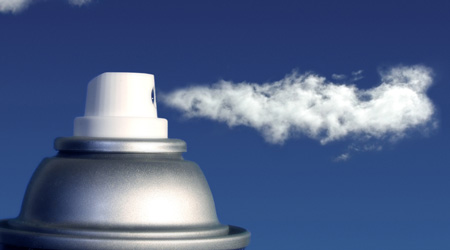
Many cleaning professionals are not as well versed about volatile organic compounds, commonly known as VOCs, as they should be. For example, we now know with certainty that high concentrations of VOCs can negatively impact indoor air quality and cause a variety of respiratory and health-related problems, especially for children, and can also negatively affect cognitive reactions.
To help expand our knowledge of VOCs, Avmor, a North American manufacturer and marketer of cleaning solutions, provides the following points to know about VOCs, specifically in green certified cleaning solutions:
No VOCs: If a green-certified product says it has no or few volatile organic compounds, that typically means there are no ozone-depleting VOCs in the product. It may still have VOCs that can impact the physical and mental health of the cleaning worker and building users.
Deceptive VOC Measurements: The VOC “content measurement” given on a product label does not reflect the VOCs released during use. The only way to ensure a product does not emit high levels of VOCs is to measure VOC emissions; it is VOC emissions, not content, that contribute to indoor air pollution. Many cleaning products considered “low-VOC” green-certified are measured by their VOC content not by their actual VOC emissions.
Dual Certification: The different certification organizations - Green Seal, the Safer Choice Program, ECOLOGO, and GREENGUARD - focus on different environmental issues. For instance, one puts more focus on sustainability, another lifecycle considerations, and still another on chemical emissions and indoor air quality. When concerns are high about protecting indoor air quality, select a product that has been green certified by two certification organizations, for instance Green Seal and GREENGUARD.
Green Aerosols: A product may have, for instance, 10 percent VOCs by weight, low enough to classify it as green or environmentally friendly. But, if packaged as an aerosol, the VOC particles will atomize during use. Atomized, VOCs are smaller and lighter, which means they can be inhaled more deeply into the lungs.
Reformulated Cleaning Solutions: Some traditional cleaning solutions that have been reformulated to meet green certification standards may meet those standards, but still emit VOCs that can harm indoor air quality over time.

 The Down and Dirty on Cleaning in Virus Season
The Down and Dirty on Cleaning in Virus Season How Surfactant Use is Expanding in Commercial Cleaning
How Surfactant Use is Expanding in Commercial Cleaning